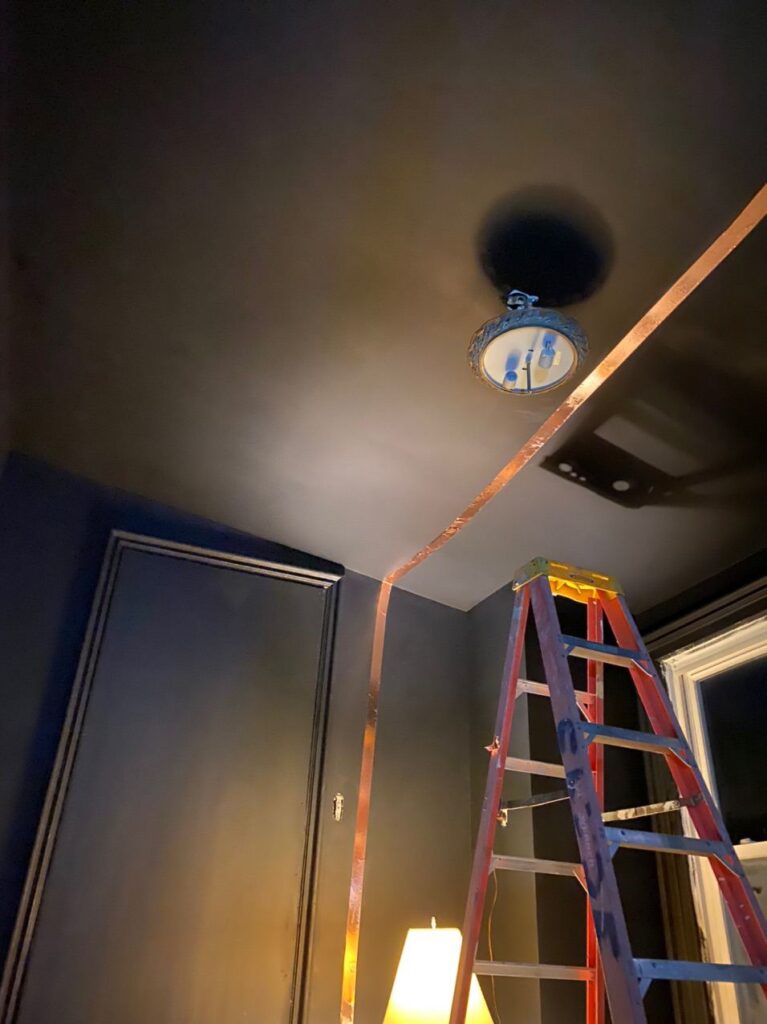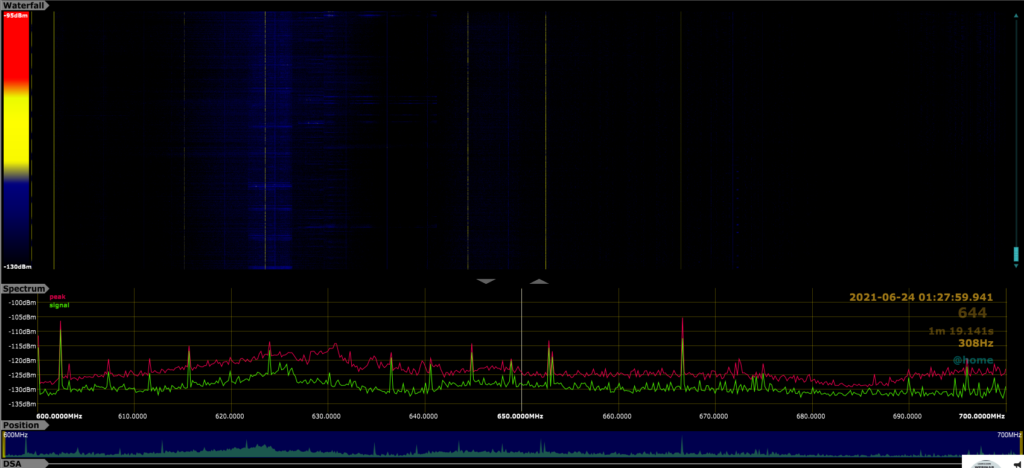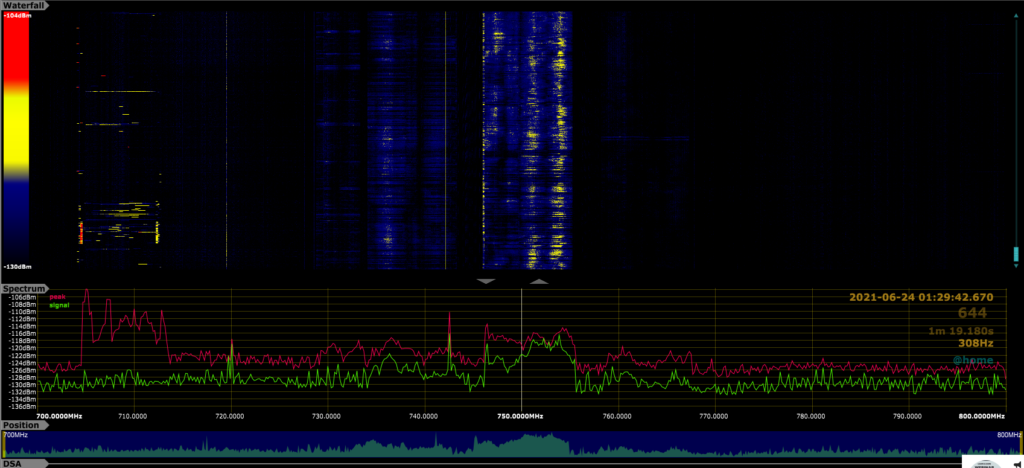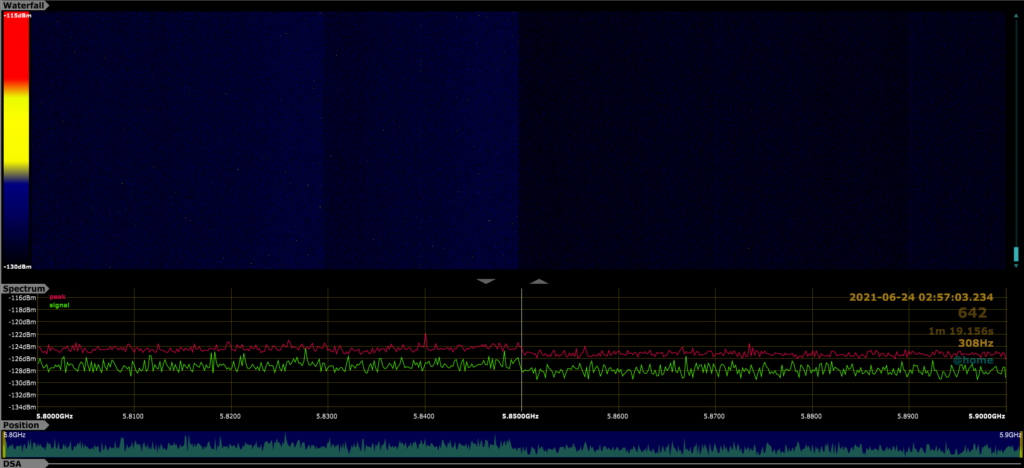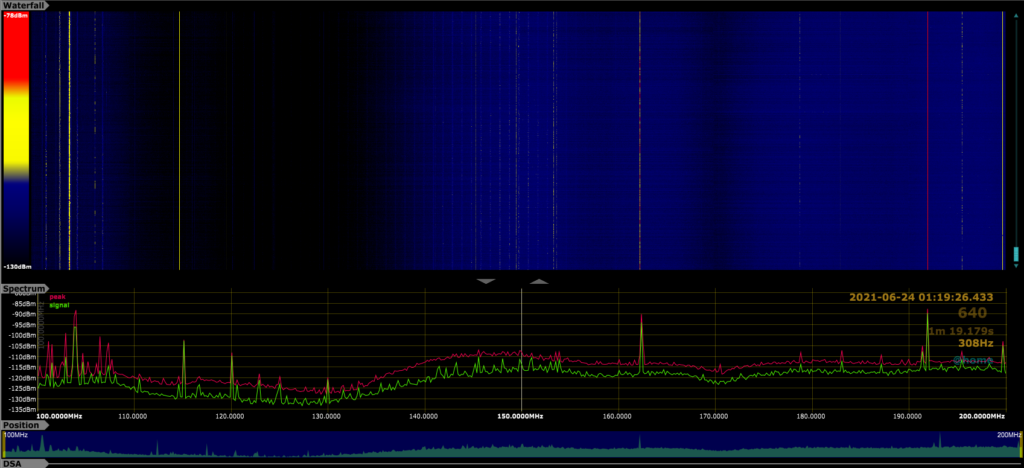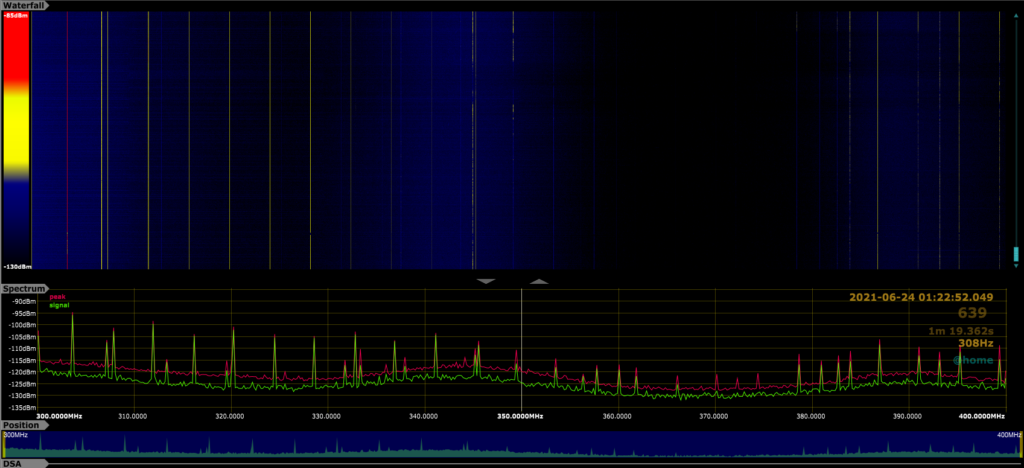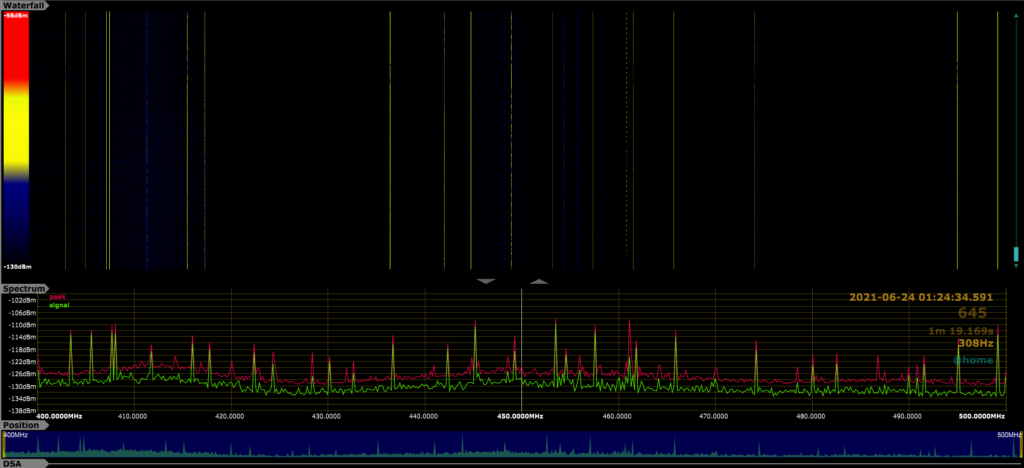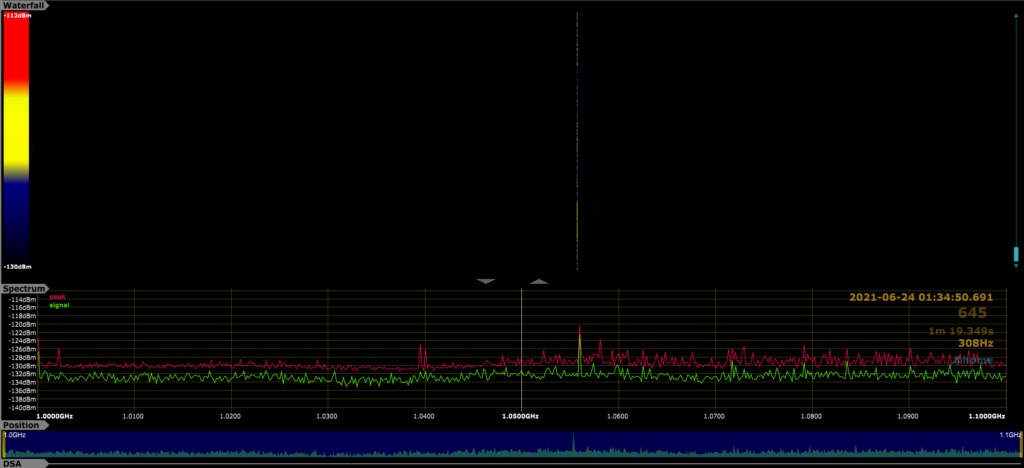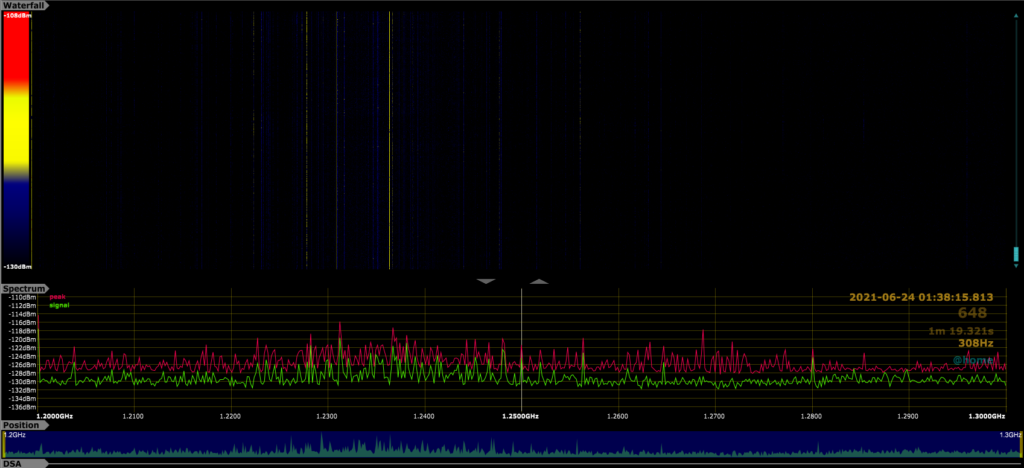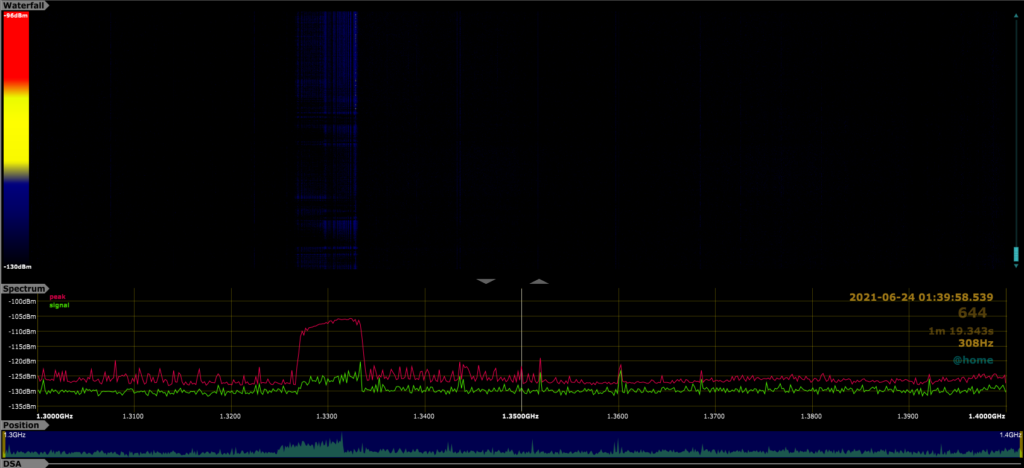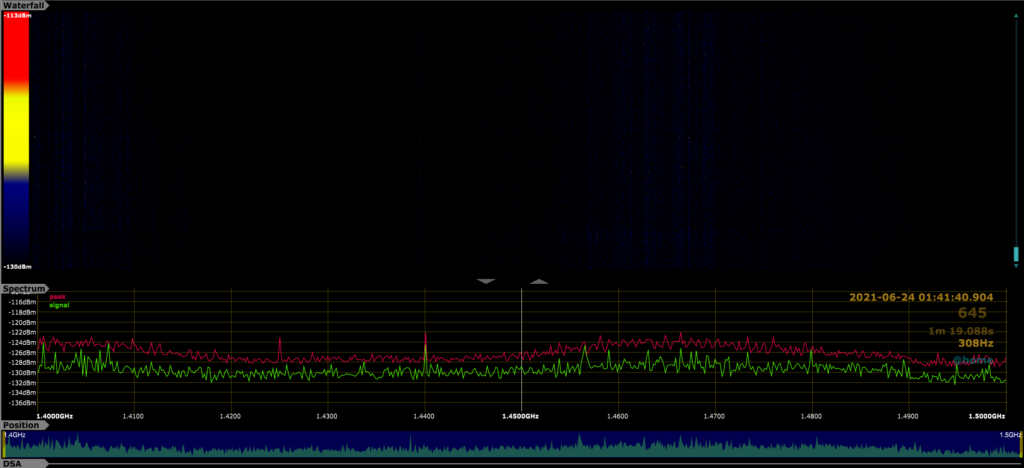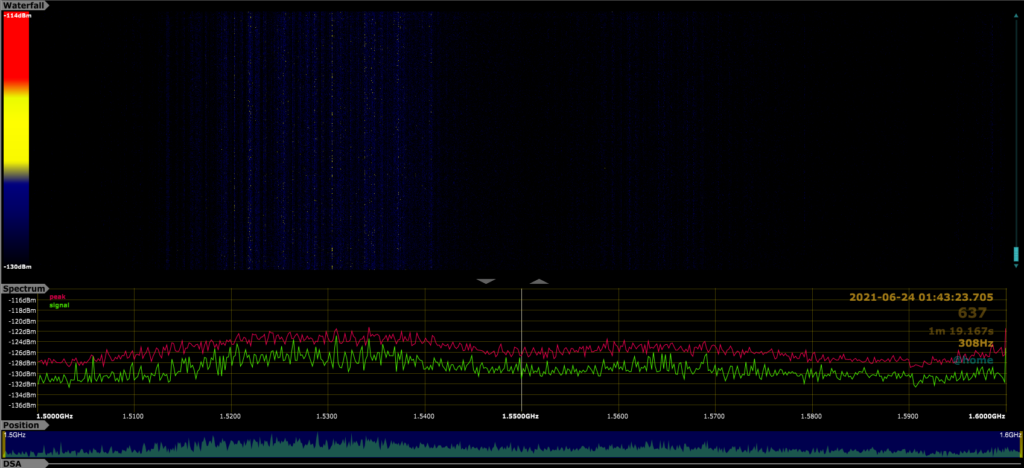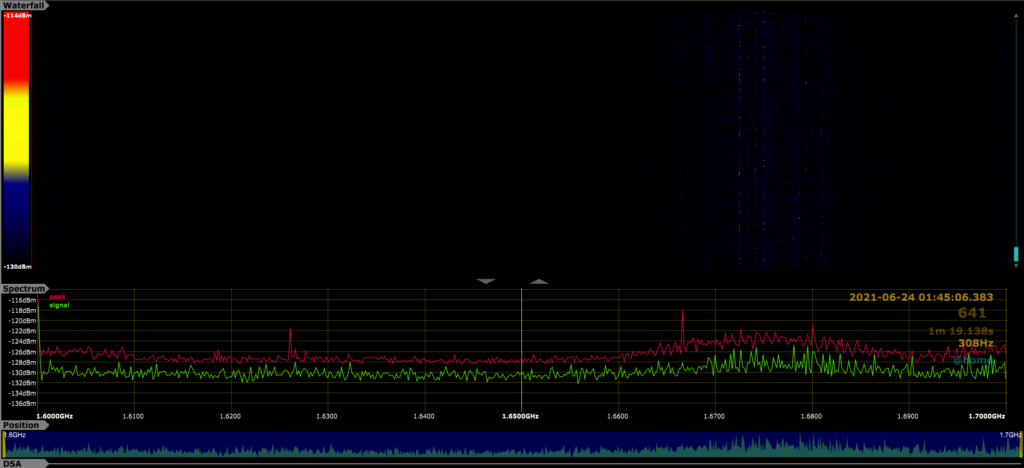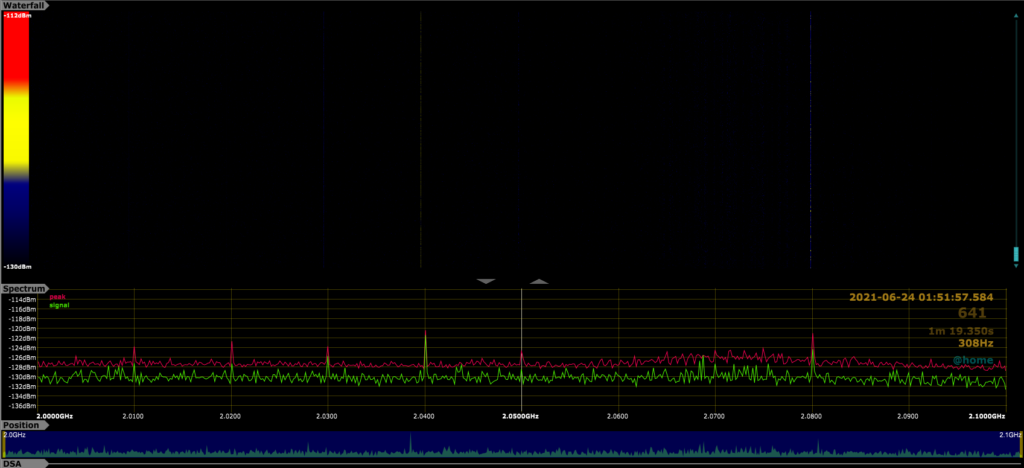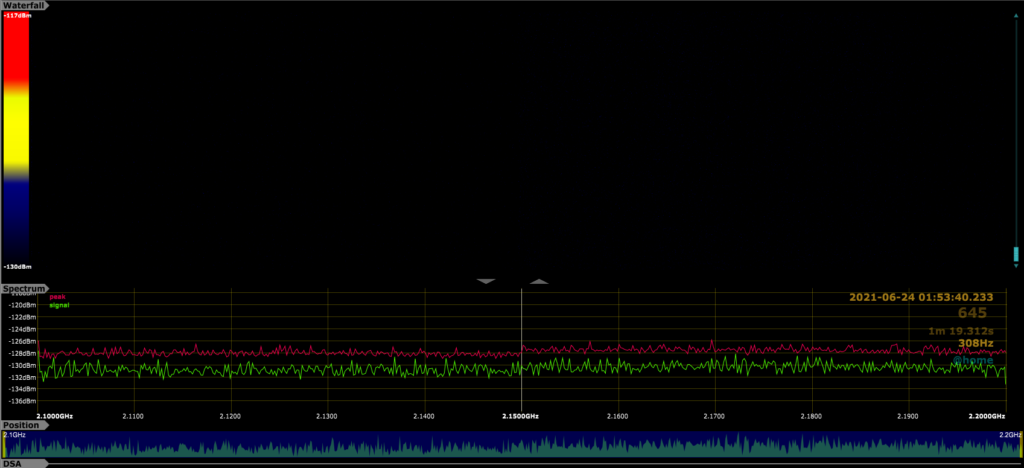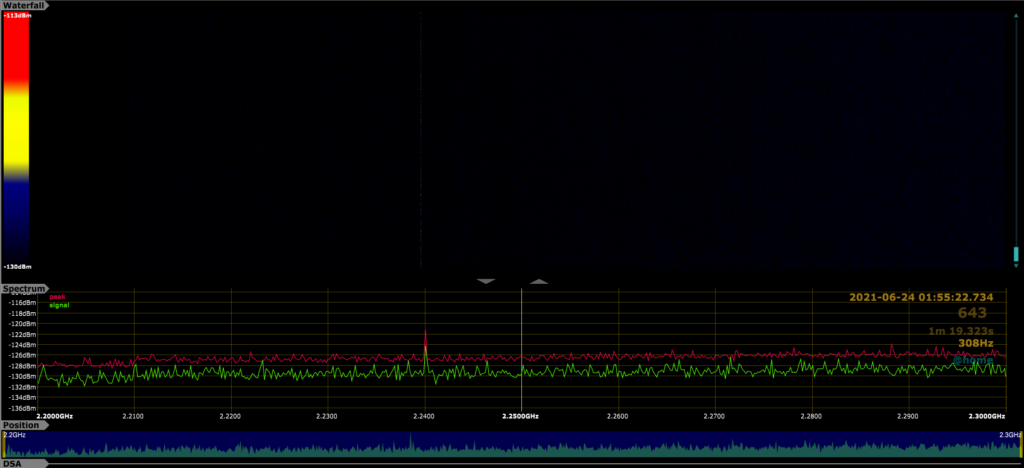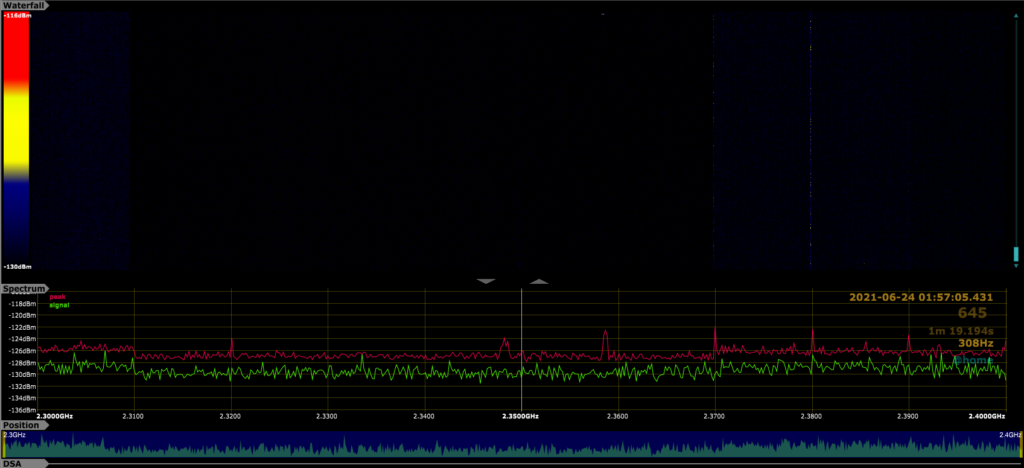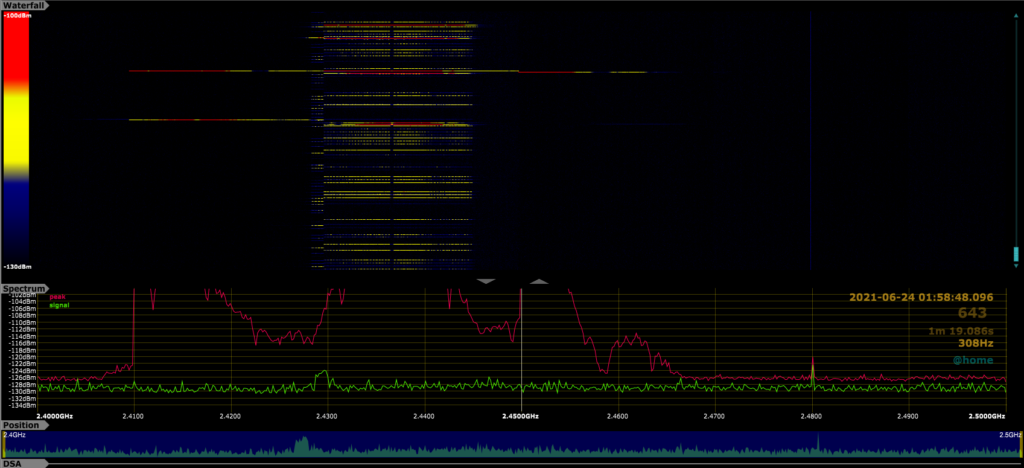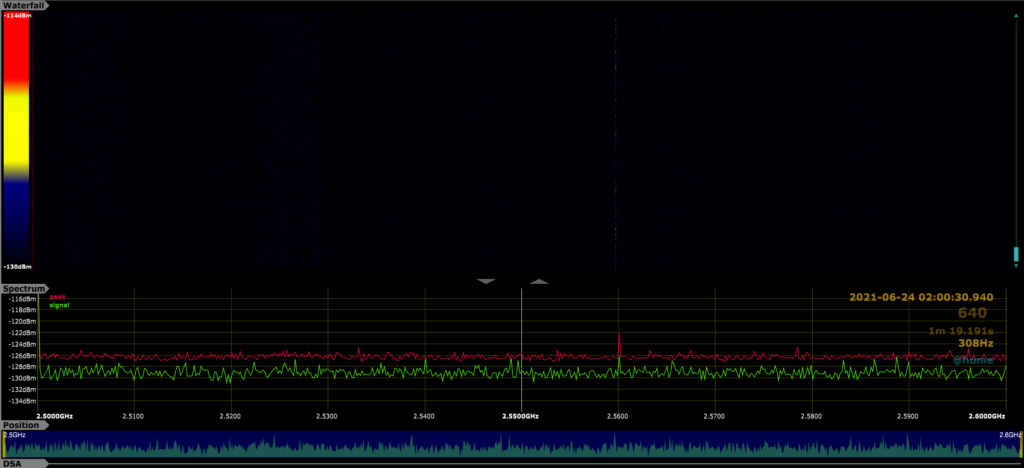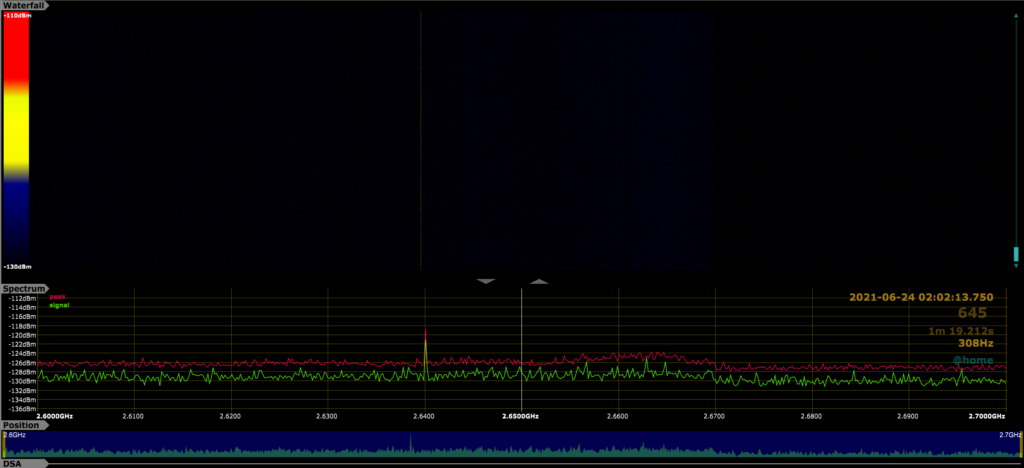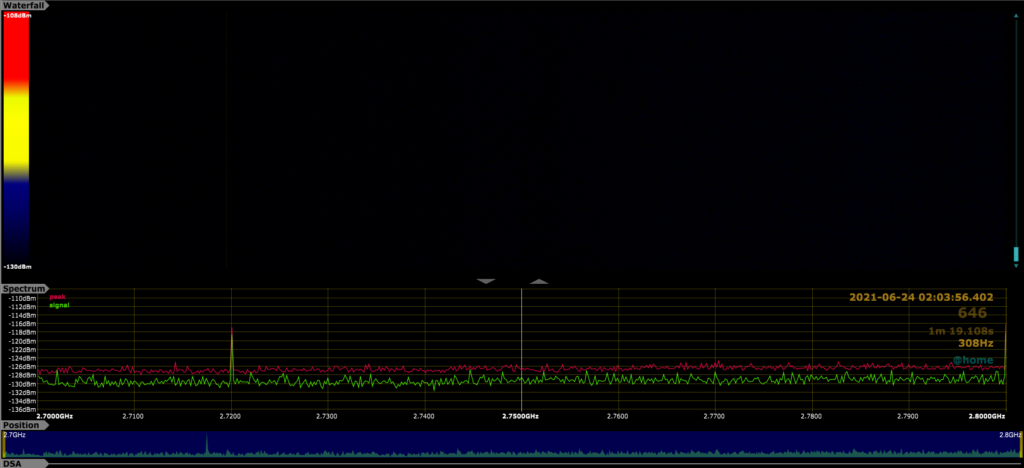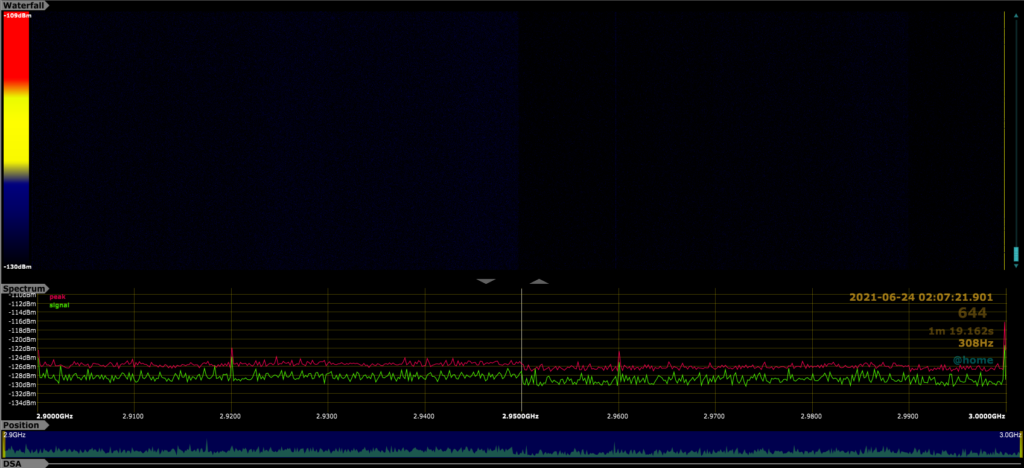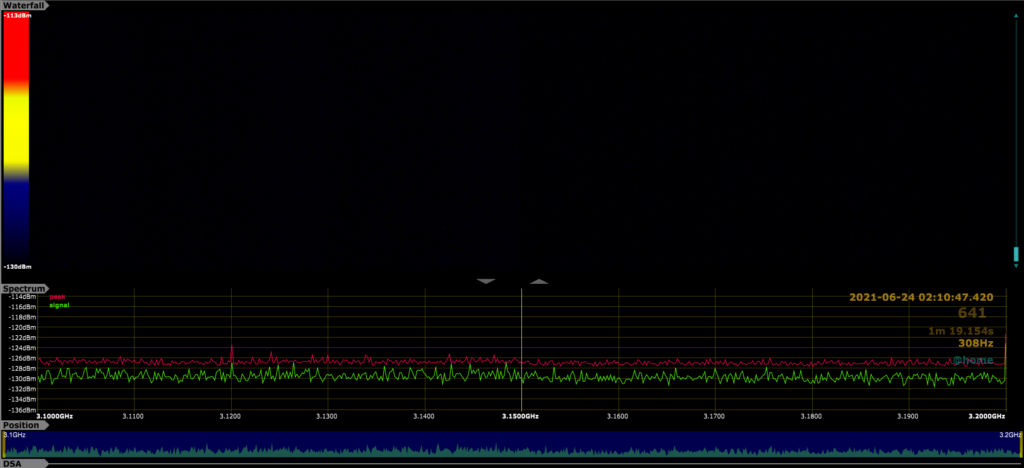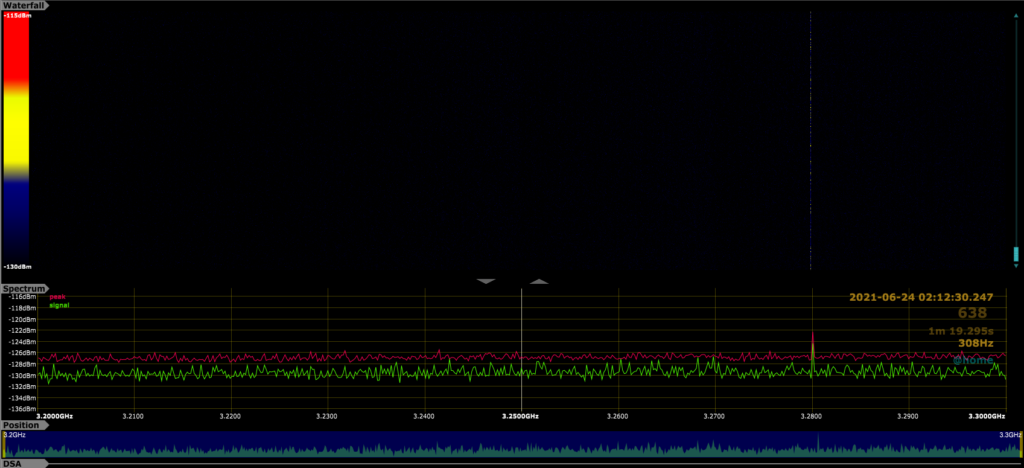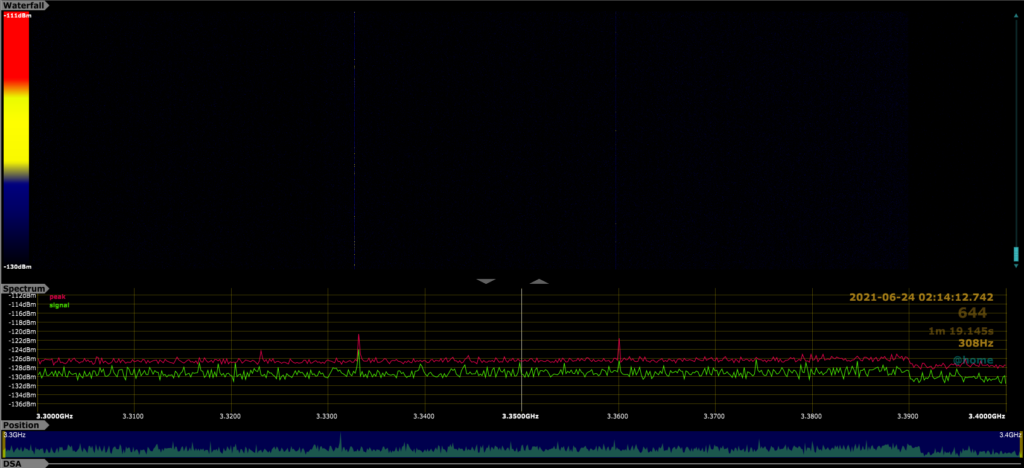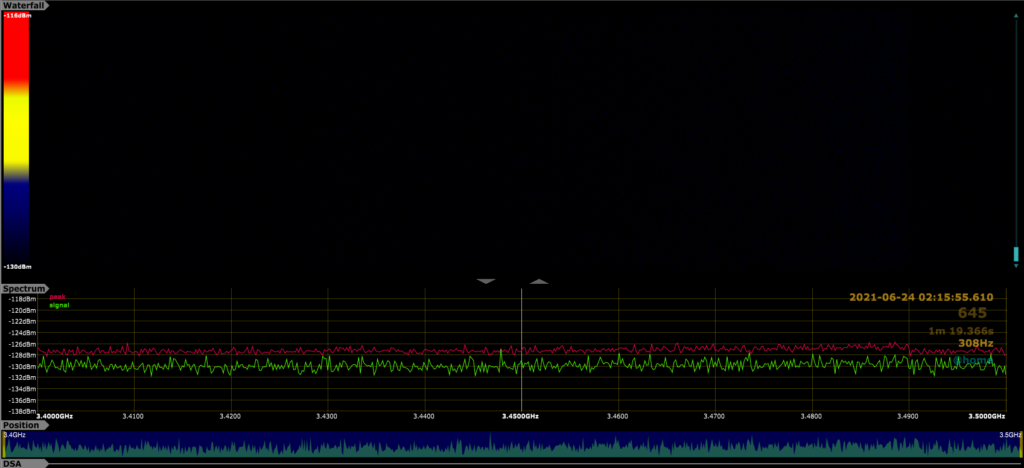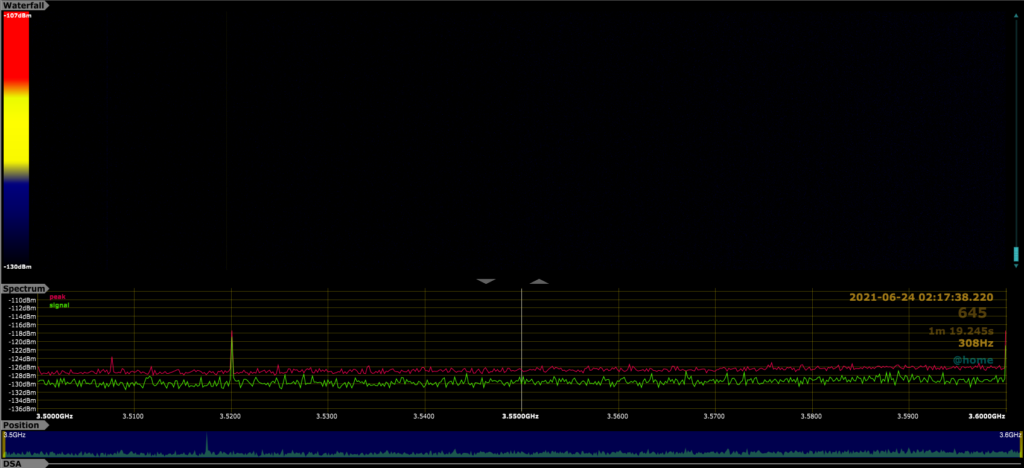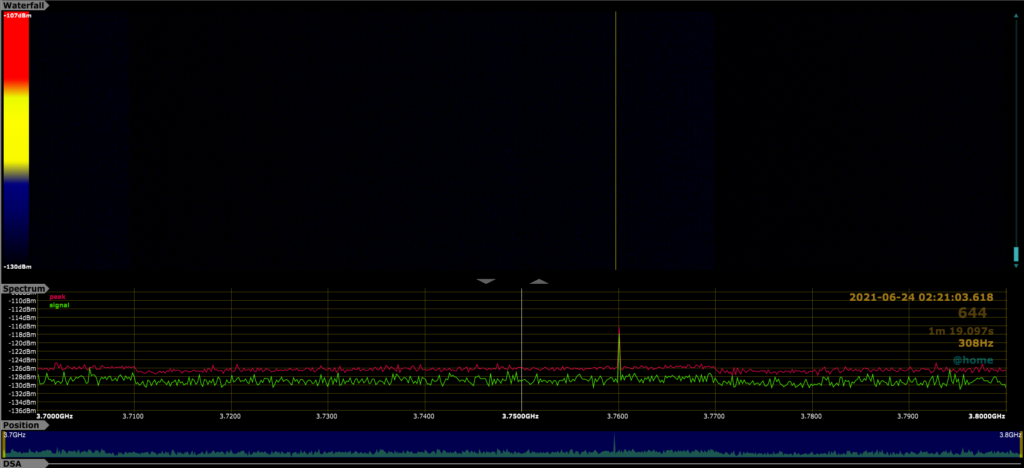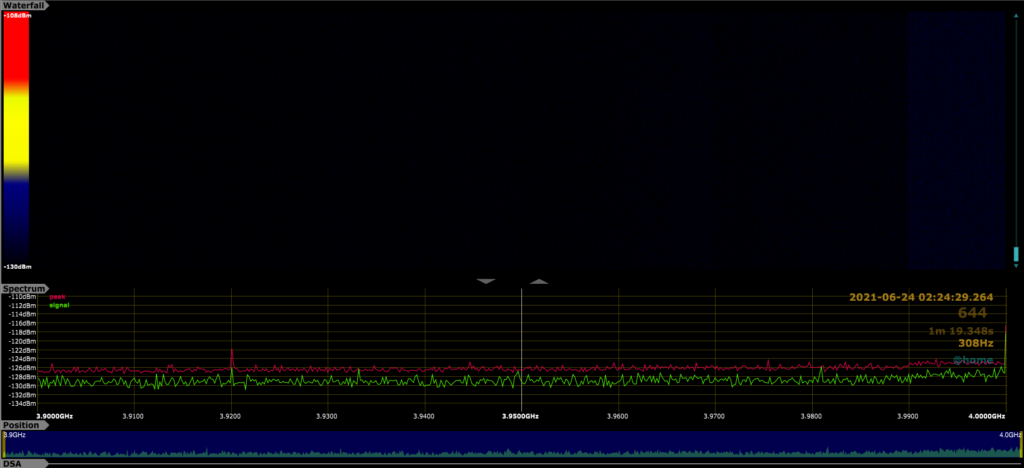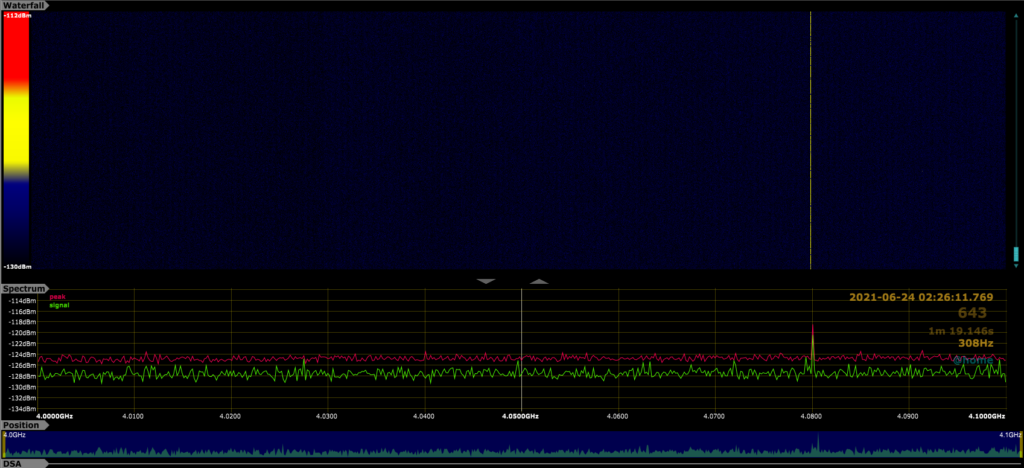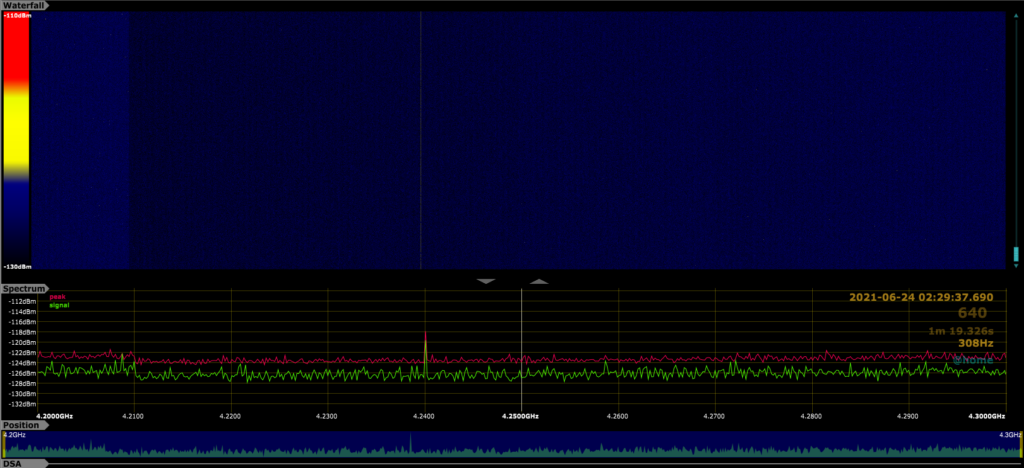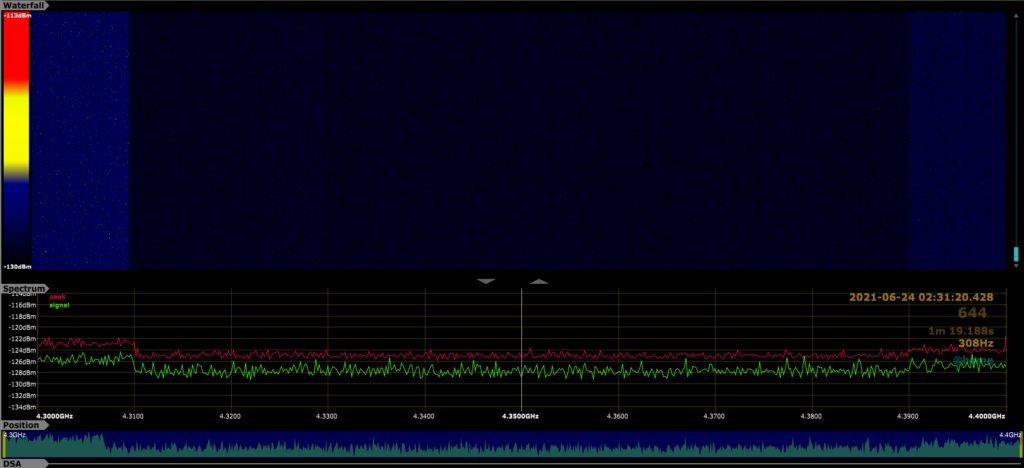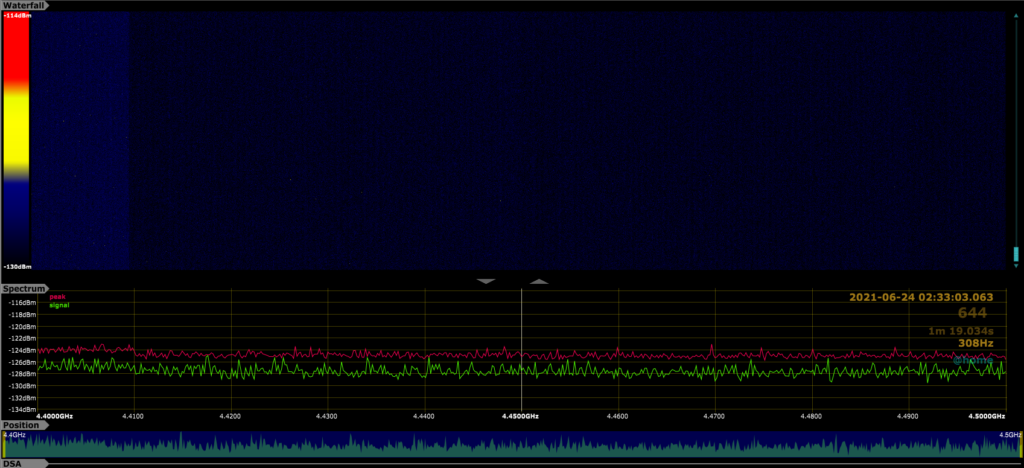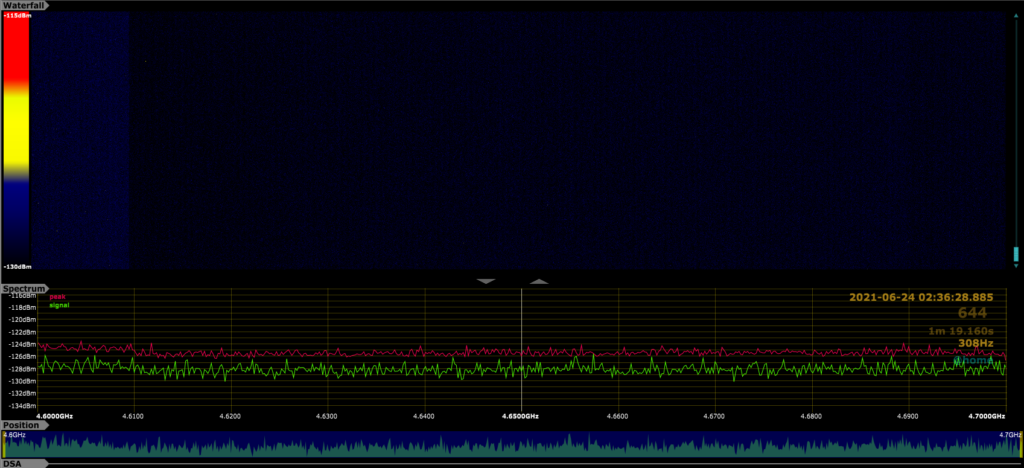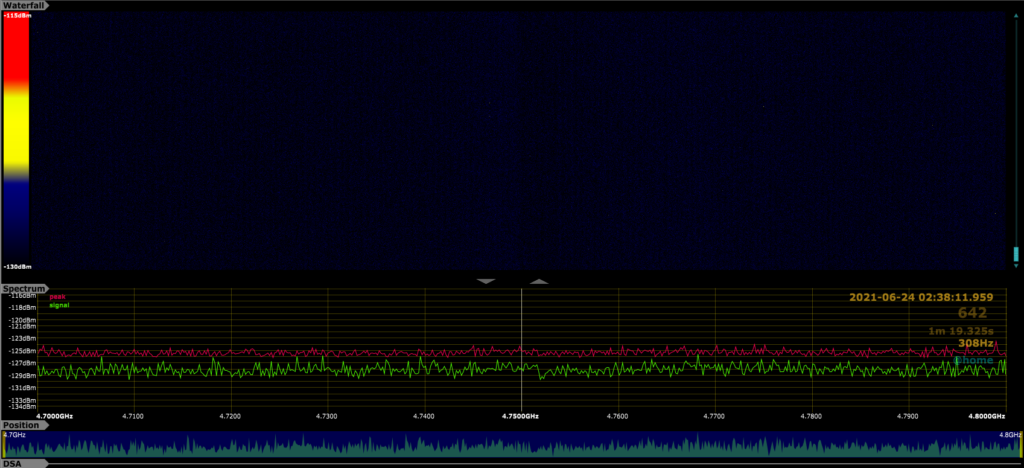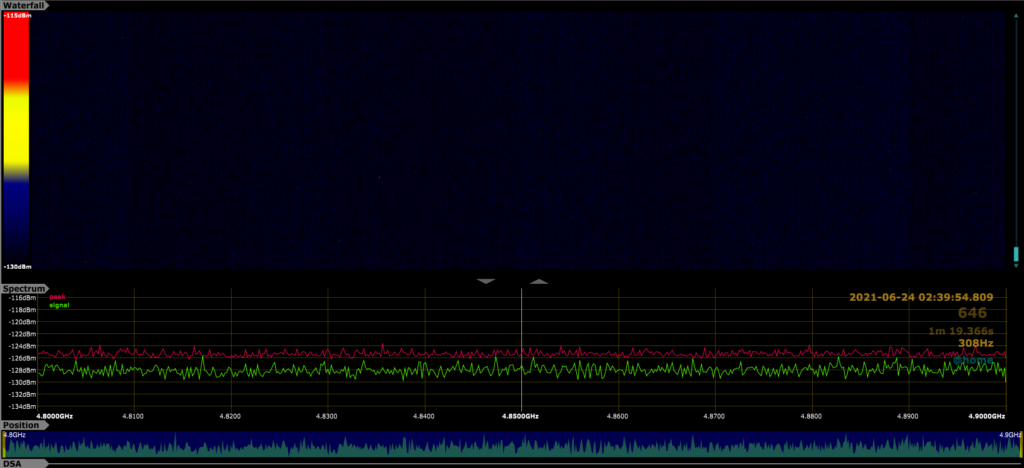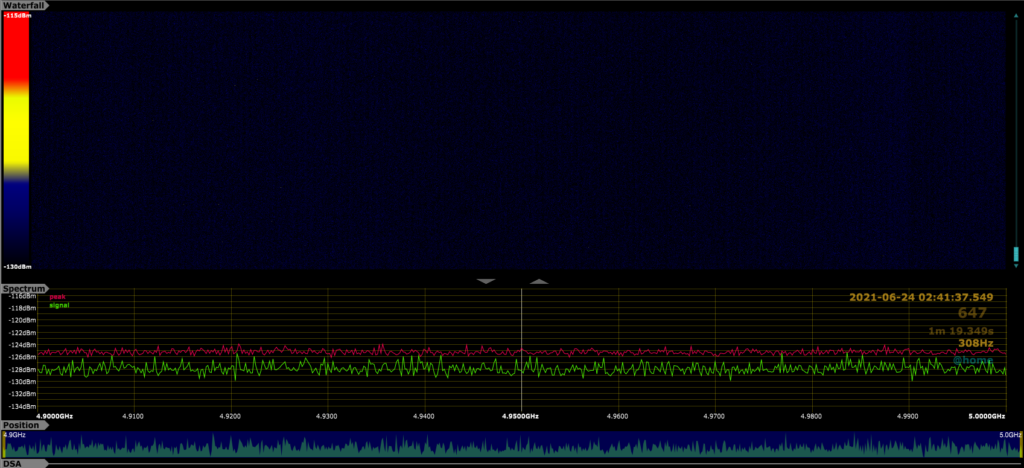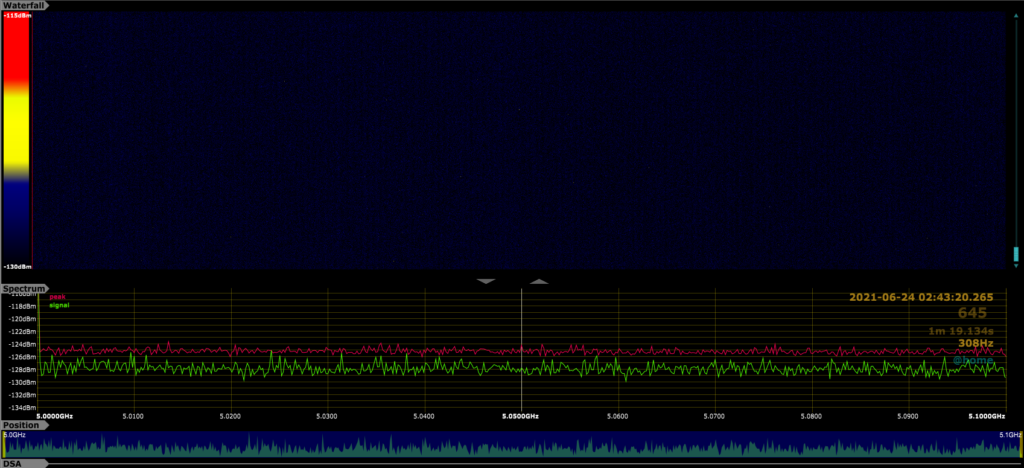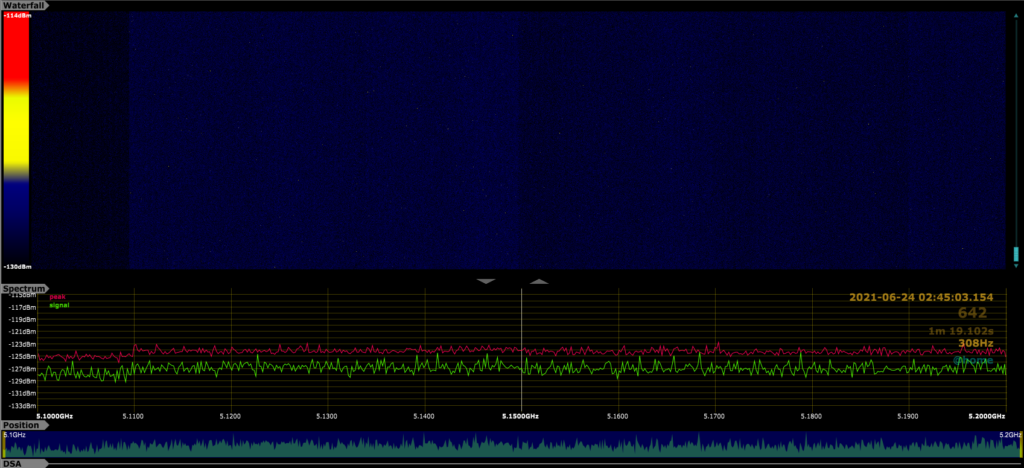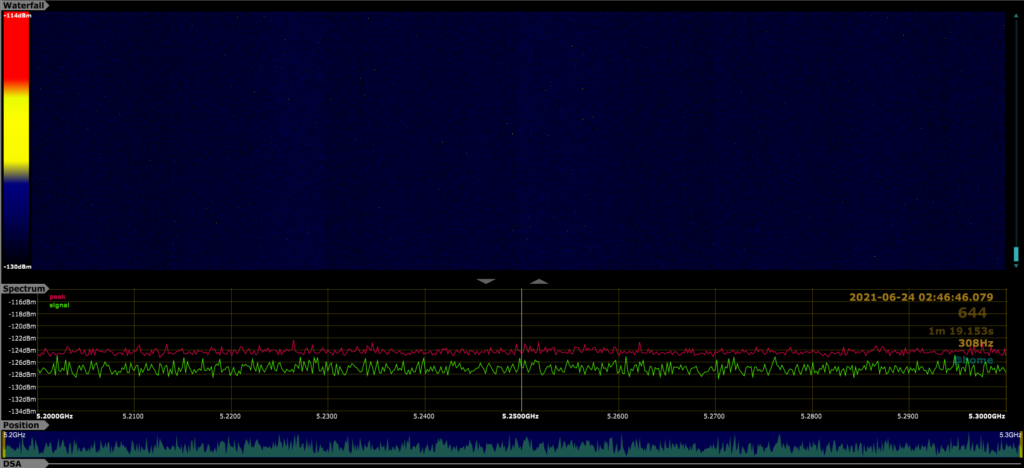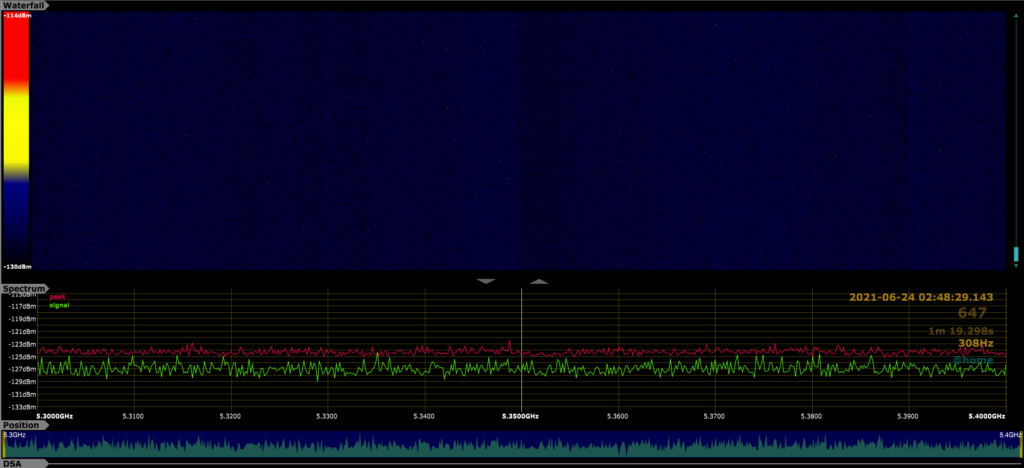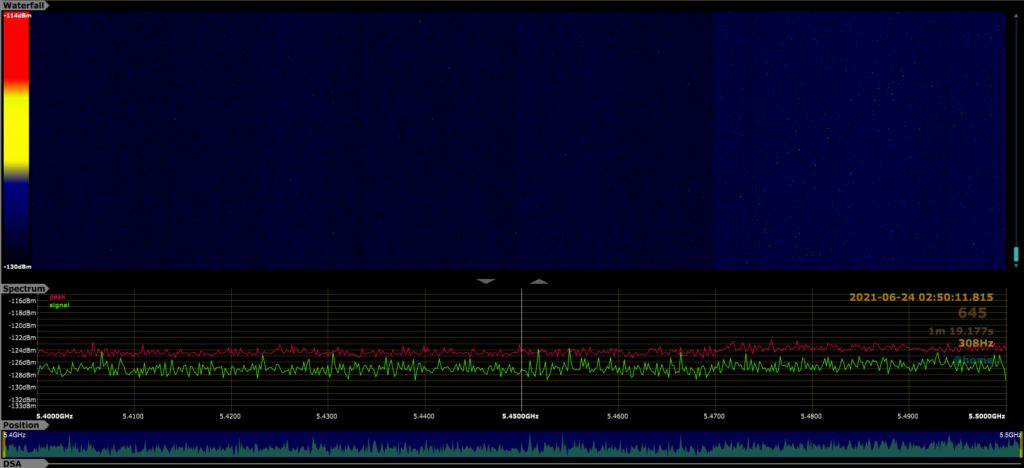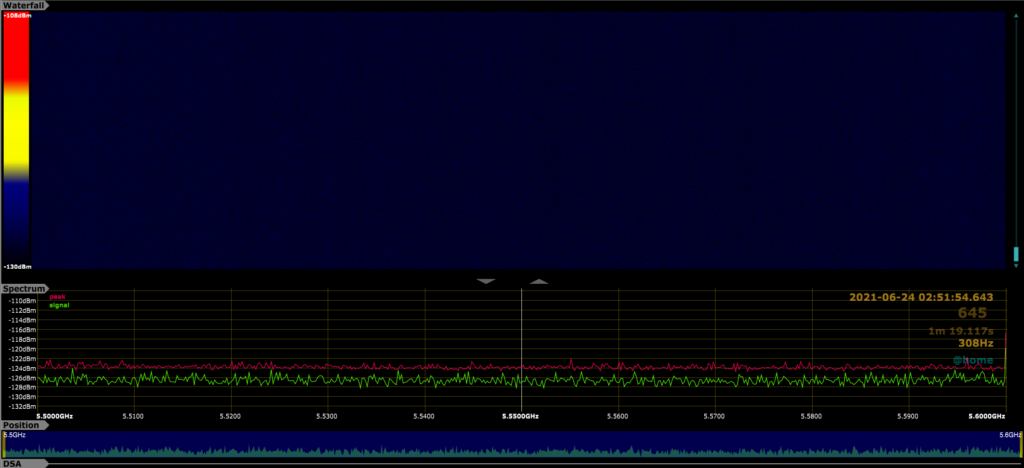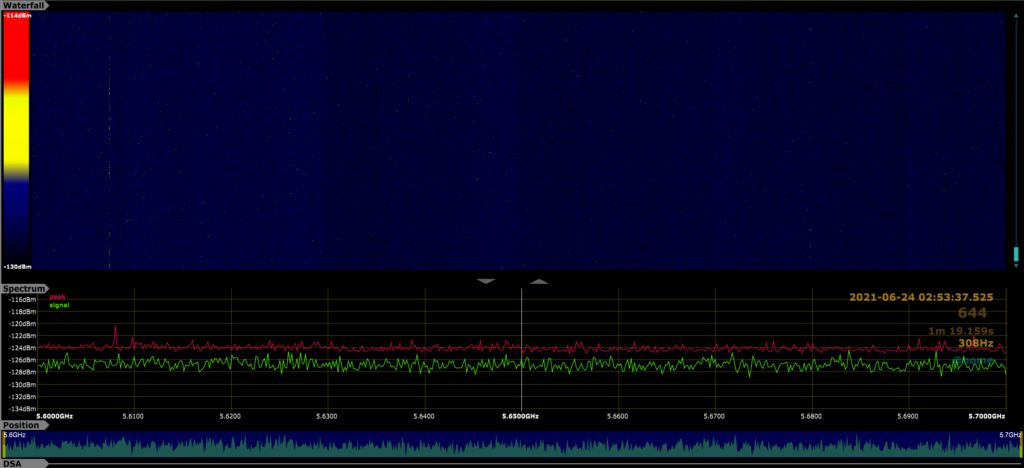
High Resolution Sweep in Shielded Environment
Many people in the targeted individual (TI) community or RF forensics space talk about detecting covert threats — but few are showing real-world, high-resolution data and methodology. In this post, I’m sharing detailed results from a real RF sweep inside a shielded environment with lab-grade equipment, and how it compares to unshielded sweeps with different resolution bandwidths.
Along with this post are:
- 📸 Images of walls painted with YShield HSF54 EMF paint
- 🔩 Copper strips grounded to a 4′ copper rod extending outside
- 🎥 A video demo using nickel-copper RF shielding fabric (75 dB attenuation)
- 📊 Spectrogram and FFT waterfall plots from the BB60C spectrum analyzer
🔬 Equipment and Setup Overview
- Spectrum Analyzer: Signal Hound BB60C
- RBW (Resolution Bandwidth): 300 Hz
- Sweep Type: Real-time with lowered noise floor (critical for detecting low-level covert signals)
- Shielding:
- Walls coated with YShield HSF54
- Copper grounding strips routed outside
- Use of RF shielding fabric (nickel-copper blend rated 75 dB attenuation)
🧪 Sweep Results Summary
| Condition | Frequencies Detected | RBW | Shielding | Notes |
|---|---|---|---|---|
| 🔓 Unshielded + 300 Hz RBW | ~6,000 | 300 Hz | ❌ No | Full spectrum visible with high noise floor removed — shows EVERYTHING |
| 🛡️ Shielded + 300 Hz RBW | ~380 | 300 Hz | ✅ Yes | Shows only real persistent signals that penetrate through the shielding or originate inside |
| 🔓 Unshielded + 20 kHz RBW | ~2,500 | 20 kHz | ❌ No | Matches what most TSCM pros see in standard sweeps |
📉 Why RBW and Noise Floor Matter
Most TSCM professionals sweep using RBWs around 20 kHz, which misses many narrowband or frequency-hopping signals. At that setting, bursted, covert, or nonlinear modulated signals can be completely invisible.
By contrast, lowering your RBW to 300 Hz, as done in this test, allows:
- Detection of extremely faint and narrow signals
- Separation of overlapping signals
- Exposure of modulation types, bursts, and sweeps that would otherwise be filtered out
Combined with a lowered noise floor, this gives you a complete view of the RF environment, making it possible to detect threats that typical gear or sweep settings completely miss.
🧠 Classify What You See: A Crowd-Sourced Challenge
Included are real BB60C waterfall and FFT images showing the full captured spectrum under these settings. I encourage readers to:
🔍 Try This:
- Use the Signal Identification Wiki (https://www.sigidwiki.com/)
- Check the FCC Frequency Allocation Chart
- Search the FCC License Database (https://www.fcc.gov/wireless/systems-utilities/universal-licensing-system)
Your task: try to classify what you see in the captured spectrum.
- What types of signals are obvious?
- Are there any odd pulsed or modulated signatures?
- Are any of them local oscillator leakage, pagers, telemetry, or known military ranges?
This is a real-world training opportunity to sharpen your SIGINT skills.
🎯 Why Shielding Is Critical
The test clearly shows:
- Without shielding and low RBW: massive signal clutter (>6,000 signals)
- With shielding and same RBW: only 380 signals remain, most of which are from known infrastructure or powerful emitters
- Without shielding but at high RBW (20 kHz): 2,500 signals, many overlapping or obscured
Key takeaway:
If you don’t shield the room or control your sweep parameters, you’ll either:
- Miss covert signals completely
- Or drown in thousands of irrelevant signals that take months to classify
And more importantly:
❗ A state-level actor will always beat you if you’re using casual sweep settings.
They hide under the noise floor. They use frequency hopping, pulsed modulations, nonlinear interactions — and you’ll never see them if your gear or technique is lacking.
🧰 Recommendations for SIGINT and TSCM Professionals
- ✅ Use RBW below 1 kHz for covert threat analysis
- ✅ Always log IQ data for demodulation
- ✅ Use high-resolution waterfall views — NOT just peak hold or bar graphs
- ✅ Compare shielded vs. unshielded sweeps to filter real threats
📢 Final Word
If you’re serious about detecting real RF threats or state-grade activity, you need to get serious about:
- Your resolution settings
- Your shielding
- Your classification skills
This isn’t about pointing at a signal and saying “that’s suspicious.” It’s about documented behavior, matched classification, and repeatable measurements.
The test proves: With proper shielding and 300 Hz RBW, only the real signals remain. Everything else is noise. Filter it, classify it, and learn to recognize the real threats.
